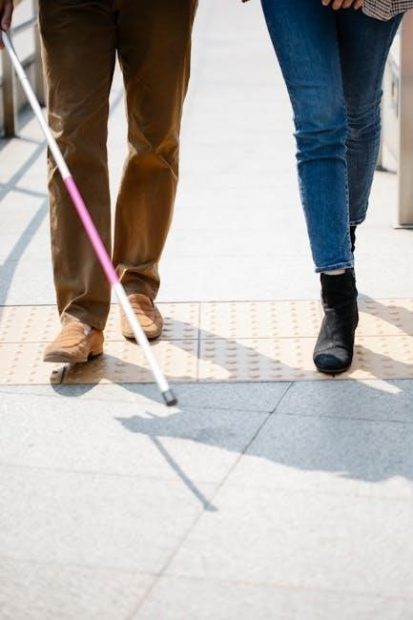Shadowing is a powerful language learning technique where learners repeat native speech in real-time to improve pronunciation‚ accent‚ and fluency. It involves listening to audio and mimicking it instantly‚ helping learners sound more natural and confident in their target language. This method‚ rooted in mid-20th-century language acquisition‚ is widely used by interpreters and language enthusiasts to refine their skills effectively.

What is Shadowing?
Shadowing is a language learning technique where learners listen to a native speaker’s audio recording and repeat what they hear in real-time. This method involves mimicking the speaker’s pronunciation‚ intonation‚ and rhythm as closely as possible. It is a simple yet effective way to improve pronunciation‚ fluency‚ and overall speech patterns. The goal is to sound as natural as the native speaker‚ focusing on accurate replication of sounds and cadence. Shadowing can be done with various materials‚ such as news clips‚ podcasts‚ or even poetry‚ making it versatile for different learning needs. While it may seem straightforward‚ consistent practice yields significant improvements in speech clarity and confidence. This technique is particularly valued for its ability to bridge the gap between listening and speaking skills‚ helping learners transition from passive understanding to active production of the target language.
Origins of the Shadowing Technique
Shadowing as a language learning technique has its roots in mid-20th-century language acquisition methodologies. It evolved from earlier practices of repetition and mimicry‚ focusing on real-time imitation of native speech. The method gained popularity in the 1960s and 1970s as linguists and language educators began recognizing its effectiveness in improving pronunciation and fluency. Initially used by interpreters to refine their skills‚ shadowing later became a widely recommended practice for language learners. Its origins are closely tied to the idea of immersing oneself in the target language’s natural flow and cadence‚ making it a cornerstone of modern language learning techniques. Over time‚ shadowing has been adapted and refined‚ but its core principle of mimicking native speech remains unchanged‚ solidifying its place as a valuable tool for language acquisition.

Benefits of Shadowing
Shadowing enhances pronunciation‚ fluency‚ and confidence by training the brain to link sounds with meanings‚ fostering natural speech patterns and improving overall language proficiency effectively.
Improved Pronunciation and Accent
Shadowing is one of the most effective techniques for improving pronunciation and accent in a target language. By closely mimicking native speech‚ learners train their brain and ears to recognize and replicate the sounds‚ intonation‚ and rhythm of the language. This method helps bridge the gap between hearing and producing sounds‚ making it easier to develop a native-like accent. Regular shadowing practice strengthens muscle memory‚ allowing learners to produce sounds more naturally over time. It also enhances the ability to distinguish and pronounce difficult phonemes‚ which are often challenging for non-native speakers. Whether using podcasts‚ TV shows‚ or formal language lessons‚ shadowing provides immediate feedback‚ helping learners refine their speech patterns. While it may feel awkward at first‚ consistent practice leads to significant improvements‚ making it an indispensable tool for anyone aiming to sound more authentic in their target language.
Enhanced Fluency and Confidence

Shadowing significantly enhances fluency by helping learners internalize the natural flow and rhythm of a language. By repeatedly mimicking native speech‚ learners develop the ability to produce sentences smoothly and spontaneously. This practice reduces hesitation and builds the habit of thinking and speaking in the target language. Over time‚ shadowing boosts confidence‚ as learners become more comfortable articulating their thoughts clearly and accurately. The repetitive nature of shadowing also improves the ability to connect words and phrases seamlessly‚ making communication feel more natural. As learners progress‚ they gain a stronger sense of self-assurance‚ which is critical for engaging in conversations and expressing ideas effectively. Shadowing not only accelerates language acquisition but also empowers learners to use their skills in real-life situations with greater ease and confidence.

How to Practice Shadowing Effectively
To practice shadowing effectively‚ select high-quality audio with transcripts‚ repeat phrases immediately after hearing them‚ start with slower recordings‚ and gradually increase speed. Practice consistently to improve pronunciation‚ rhythm‚ and overall fluency.
Step-by-Step Guide to Shadowing
Start by choosing a high-quality audio clip in your target language‚ preferably with a transcript. Listen to a short segment‚ then pause and repeat it immediately. Focus on matching the speaker’s tone‚ pitch‚ and rhythm. Gradually increase the length of the segments as you become more comfortable. Practice regularly‚ even for short periods‚ to build consistency. For advanced learners‚ try shadowing without pausing or use outdoor walks to simulate real-life conversations. Review and adjust your pronunciation by comparing your recordings with the original. Over time‚ this method will enhance your speaking skills and boost your confidence in using the language effectively.

Best Materials for Shadowing (Audio and Text)
The best materials for shadowing include high-quality audio clips with clear pronunciation‚ such as podcasts‚ news broadcasts‚ and TED Talks. Texts like poetry‚ dialogues‚ and children’s stories are also ideal‚ as they provide rhythmic and contextual learning. Choose materials that align with your skill level and interests to stay motivated. For advanced learners‚ movies and TV shows with subtitles are excellent for practicing casual speech patterns. Additionally‚ using language learning apps or platforms with shadowing exercises can enhance your practice. Always opt for materials with transcripts to follow along and improve simultaneously. Mix native speeches‚ interviews‚ and even songs to diversify your exposure to accents and speaking styles‚ ensuring a well-rounded learning experience.

Advanced Shadowing Techniques
Advanced shadowing involves refining pronunciation and fluency through precise mimicry. Arguelles’ method emphasizes walking outdoors to automate language use. This technique enhances real-time speech production and confidence naturally;

Arguelles’ Tips for Mastering Shadowing
Arguelles‚ a renowned expert in language learning‚ provides specific tips to enhance shadowing effectiveness. First‚ he recommends walking outdoors while practicing‚ as it forces learners to use the language in dynamic‚ real-world settings. Second‚ he emphasizes the importance of focusing on short audio clips‚ repeating them multiple times until the pronunciation and intonation match the native speaker. Third‚ Arguelles suggests shadowing a variety of materials‚ including news broadcasts‚ podcasts‚ and even poetry‚ to expose oneself to diverse accents and speaking styles. He also highlights the need to Shadowing is a language learning technique where learners repeat native speech in real-time to improve pronunciation‚ accent‚ and fluency. It involves listening to audio and mimicking it instantly‚ helping learners sound more natural and confident in their target language. This method‚ rooted in mid-20th-century language acquisition‚ is widely used by interpreters and language enthusiasts to refine their skills effectively. focus on the physical aspects of speaking‚ such as mouth movements and breathing‚ to replicate the native speaker’s voice accurately. By following these tips‚ learners can achieve a more natural and fluent command of their target language.

Common Mistakes to Avoid
When practicing shadowing‚ several common mistakes can hinder progress. First‚ overrepeating the same audio without understanding the content can lead to mechanical repetition rather than meaningful learning. Second‚ neglecting to focus on rhythm and intonation can result in a robotic delivery. Third‚ comparing oneself too harshly to native speakers can discourage motivation. Additionally‚ shadowing for extended periods without breaks may cause mental fatigue. Finally‚ relying solely on shadowing without complementing it with other language practices‚ such as speaking and writing‚ limits overall improvement. By being aware of these pitfalls‚ learners can refine their technique and maximize the benefits of shadowing.
Shadowing is a highly effective language learning technique that offers numerous benefits‚ from improving pronunciation and fluency to boosting confidence. By mimicking native speech in real-time‚ learners can develop a more natural and authentic way of speaking. While it is simple to practice‚ consistency and mindful execution are key to achieving the best results. Avoiding common mistakes‚ such as overrepetition without understanding or neglecting rhythm‚ ensures a more productive experience. Shadowing complements other language learning methods and is a valuable tool for anyone aiming to master a new language. With dedication and the right approach‚ shadowing can transform the way you speak and understand your target language‚ helping you sound more like a native speaker.
